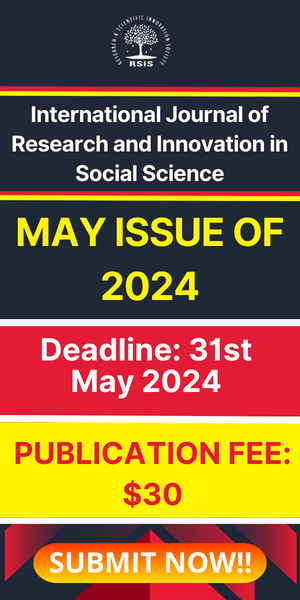China-Kenya Foreign Aid Relations: Examining Its Possible Links with Kenya’s Human Rights Profile
- November 13, 2019
- Posted by: RSIS
- Categories: IJRISS, International Relations
International Journal of Research and Innovation in Social Science (IJRISS) | Volume III, Issue X, October 2019 | ISSN 2454–6186
China-Kenya Foreign Aid Relations: Examining Its Possible Links with Kenya’s Human Rights Profile
Lilian Tunai Mulati
Department of International Relations, Conflict and Strategic Studies, Kenyatta University, Kenya
Abstract: – While the West attaches strict guidelines, restrictions and conditionalities to its foreign aid disbursement, China has adopted a ‘no-strings attached policy.’ China’s choice not to make human rights part of its engagement with Africa has made it an attractive partner to African governments who are wary of Western countries’ human rights excesses. However, most of these African countries such as Sudan and Zimbabwe have been accused of serious human rights violations. Kenya has significantly shifted her preference to China since 2002 when the NARC government took over power. Although Kenya’s human rights standards especially in the recent past have not been good, it has not been as gross as those of Zimbabwe and Sudan. Whereas the bilateral relations between China-Zimbabwe and China-Sudan is motivated, at least in part by poor human rights profile, the nature of China-Kenya relations has not been clearly defined. The study therefore sought to find out if we can contextually situate it among the trend that has defined the relationship between China and other African countries expressed in terms of a relation of mutual advantage.
Key words: foreign aid relations. Human rights profile
I. INTRODUCTION
The introductory part of this paper is based on the studies on concepts of foreign aid relations and their link to human rights. Foreign aid is defined as financial flows, technical assistance and commodities from bilateral and multilateral agencies that are designed to promote economic development and welfare as their main objective (Chakravarti, 2005). Multilateral agencies are organizations such as the World Bank and the International Monetary Fund (Krueger & Ruttan, 1989). Bilateral aid partners are individual donor countries such as Britain and China or donor agencies such as DANIDA, NORAD and USAID (Madeley, 1991). Foreign aid became a significant element of international political economy after the Second World War under the Marshall Plan also known as the European Recovery Program (Gilpin, 1987). The Marshall Plan was aid directed towards war-ravaged western European countries by the United States. This aimed at rebuilding their economic, social and political infrastructure, to rebuild market for American products and to control communist advancement (Kegley & Wittkopf, 1996).


